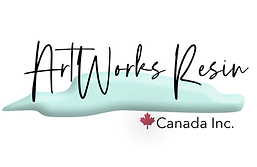Memorial or remembrance resin pieces are very sentimental. Creating memory pieces is such a beautiful & precious way to help loved ones keep their memories close. While it may not be for everyone, there are many people who cherish having such a special memento.
Some things to keep in mind for consideration:
Suggesting, and working with these pieces is a very emotional process for all involved. Be prepared it can also be emotional for the artists, even when working for people (& pets), they may not know. The stories involved can sometimes be heart wrenching.
To honour the person or pet you are handling, always wear gloves, and use new equipment /tools only, and do not reuse anything once used with someones cremains/dna.
Many keepsake artists are not comfortable with disposing of anything as sentimental as leftover cremation ash, hair (or umbilical cord or breast milk, etc) memory type items. This sensitive topic should be discussed in detail, and agreed upon with client, ahead of accepting any projects.
Some people may ask to add something special to the piece as well. Be sure that is determined prior to beginning and quoting work, so you know the full scope of the job. Also check that added item(s) will not be ruined or disappear in the resin curing process. Some items may need to be presealed/primed. Some people may want a piece made with a photo of loved one or pet. Items like photos do need to be presealed, and we always recommend using a copy, never use the original photo.
If a customer asks for jewelry such as a pendant or ring (for example), some (not all) keepsake artists have a policy of making casts (not finished pieces) so the client can choose, and then they return all casts (including failures) to the client.
Maybe create a check list that helps both the customer and you, since it's such an emotional item, it is easy to forget or overlook something that might be very important, that can not be changed once piece is created.
Some people tend towards preferring transparent pieces (using tints or alcohol inks, but be aware alcohol inks can/do fade since they are not lightfast).
At ArtWorks Resin Canada, we have numerous colourfast transparent tint options (so you don't need to worry about alcohol inks fading). Transparent is not always desired by customers, & of course any colours can be used. It is a good idea to ask customer if there was a special colour desired.
Another common mix is white or pearl white mica, then add roughy half a teaspoon of ashes for smaller pieces. Sometimes they like to make it look like white opal, by adding opal powder, cremains and a bits of gold foil.
Depending on size of mould or piece, a casting resin may be used. A top-coating resin is often used on much smaller pieces, or wall art. This also depends on the type of project being made.
Some people are okay to have ashes or hair directly put into the jewelry piece, some prefer to have the ashes or hair set into a tiny type urn or glass enclosure that is then cast into the resin piece. Sometimes families have someone put ashes in to a tiny locket type urn prior to contact with the resin artist.
Tips to know for beginners:
Ashes are heavy and will sink. Mix a fair amount ash till it forms a kind of paste (when going lighter on the ash or cord it can tend to sink and distribute unevenly). Depending on amount & type of ash, careful not to mix too much as it may become muddy looking.
Be prepared, human ash looks kind of like grey gravel (& may or may not come to you pre-sifted). Discuss with your client if they'd prefer to use as is, or sifted for the creation.
Fireplace ash is a totally different consistency.
Sand has a more similar consistency to human ash.
***It’s always a good idea to do some test casts with just sand first if you’ve not worked with ash remains before. And if needed for test piece, you can add smaller tiny gravel bits.
Depending on piece being made, you can put a clear layer of resin down first, then let it set. Once set, you can arrange ashes as desired on next level.
Ideas:
Jewellry (rings, charms, pendants, & more)
Pyramids or other mould shapes, with persons favourite flower(s) already dehydrated, then ashes added into bottom layer of pyramid (along with any of the additives mentioned below).
Heart shaped moulds or wall art.
Love or any word moulds.
Angel wing shaped moulds, or add angel images on to wall art.
Christmas tree ornaments.
Wall art of ocean beach wave, with ashes mixed in sand area.
Photos can be added to many pieces as well. Use copies of photos (so original is still available if anything doesn't work out). These can either be laminated or coated with several coats of archival spray sealant, or some people use mod podge. Let dry completely before using in resin.
You could put photos (or other mementos) into a smaller square mould, then once cured, the square finished piece could be added inside another larger mould with added elements. The larger mould could be a pyramid or other type of mould the square finished piece can fit inside.
Photo frames can also be used to decorate with ashes, then place special photo inside frame.
For pets there are paw print moulds as well.
Horseshoe moulds often used for horse hair pieces.
Common additives (besides colourants) to mix with ash:
Iridescent type glitter
glass glitter
regular glitter
foil flakes
any other type of flakes.
gemstones
gemstone sand.
Beach sand, &/or gravel.

.png)